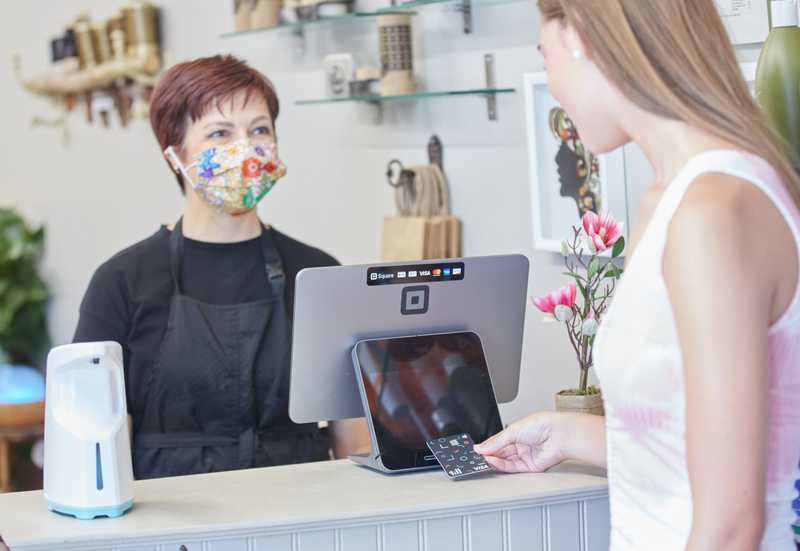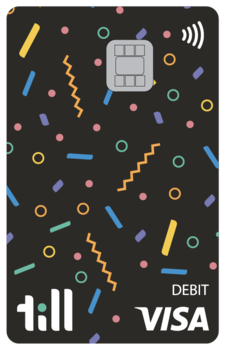Debit Cards vs. Credit Cards

5 min read

They may look the same, but they are different. To the uninitiated, debit cards and credit cards may seem interchangeable, but when we check our bank balance or pay a credit card bill, we understand the difference. At Till, we’ve heard from families that their kids sometimes have trouble distinguishing between the two. We’ve created something of a primer below that spells out the differences between the two methods of payment that you can share with your kids. We hope you can use this as a tool to spur family discussions.
What’s the difference between debit cards and credit cards?
Both types of cards function virtually the same when you pay for something, whether it’s in person or online, but behind the scenes, there is a distinct difference!
First, let’s talk about how they are the same…you can use both types of cards to pay for things in person with a physical card, online with a card number, or in a mobile wallet both in person or online. A mobile wallet is a virtual wallet that stores card information on a mobile device. Apple Pay and Google Pay are both examples of mobile wallets.
With a debit card, the amount you can spend is limited by the amount of money in your bank account.
Debit Card
How does it work?
A debit card is linked to a bank account, so using a debit card is using actual money that you already have in your account. Picture an envelope with money in it. In essence, you are taking money out of your envelope to pay for something. With a debit card, the amount you can spend is limited by the amount of money in your bank account. If you run out of money, you cannot use your card.

How do you use it?
You can use a debit card to withdraw money from your bank account at an ATM. If your debit card is linked to Visa or Mastercard, you can use it to pay for things in stores or online. When you withdraw money or make a purchase in person, you may need to enter a PIN, or personal identification number (and it’s important to remember this number and keep it private). Some stores allow you to bypass entering the PIN by just hitting enter to continue with the transaction.
A credit card is money that you are borrowing to pay back, so using a credit card is more like writing an I.O.U. note to someone.
Credit Card
How does it work?
A credit card is money that you are borrowing to pay back, so using a credit card is more like writing an I.O.U. note to someone. Credit card companies give you a certain amount of time to pay the money back, called a grace period. A grace period is often between 21-30 days, and it is decided by your credit card company. If you have not paid for your new purchases within the grace period, then you’ll be charged interest, which is a fee for using someone else’s money. Your credit card company determines the amount of interest it charges. This is something to be careful about, because if you don’t pay your full credit card bill within the grace period, then you are, in essence, paying more for those purchases over time, in the form of interest. Sometimes this option is useful, if you have a necessary purchase or an unforeseen bill, and you know that you will not be able to pay for it all at once, then you can pay for it with your credit card. The downside is that whatever you are paying for will cost you more in the long run. You can use some credit cards to take cash advances if you need cash, but advances are also subject to interest, and sometimes other fees as well.
How do you use it?
When you use a credit card to pay for something in person, you will typically be asked to sign your name either on paper or on a screen to show that you are approving the purchase. The amount of money you can spend with a credit card is determined by your credit limit which your credit card company decides based on how much money you earn.

Is Till a debit or credit card?
Till is a debit card, and can be used anywhere Visa is accepted. It can be used as a physical card, or in your mobile wallet. Like other debit cards, you have a pin to use your Till card, but it can be bypassed at certain stores.
The Till experience is different from a regular debit card because Till was designed for families. It’s easy for parents to use the app to add money to a Till account, either as a recurring Allowance, or as pay for specific completed Tasks. Parents can also use the Quick Give feature in the app to transfer money instantly. It’s also easy for other community members, like a grandparent, or a neighbor to deposit money into a Till account for a gift or payment. If a kid has a “real” job, they can get paid via Direct Deposit into their Till account. The account and routing numbers to sign up for direct deposit are available in your account details in the Till app. Kids and parents can use the app to check balances and see how much is in a Till account. Kids can also set Saving Goals in the app and track how close they are to achieving those goals. These types of features are not available from traditional debit cards.
Whatever card you are using, use it responsibly. Keep your card and information private, and check your balance before you use a card. You’re on your way to becoming a smarter spender!
This article is for informational purposes only and is not a substitute for individualized professional advice.
Join our mailing list for updates and offers from Till!
Keep Reading...
Read all articles
Dynamic Currency Conversion: Explained for Teens
Demystifying the ins and outs of dynamic currency conversion to help your teen optimize their spending abroad....

Understanding Foreign Transaction Fees
Your guide to teaching your kids about foreign transaction fees, and other tips when spending abroad...